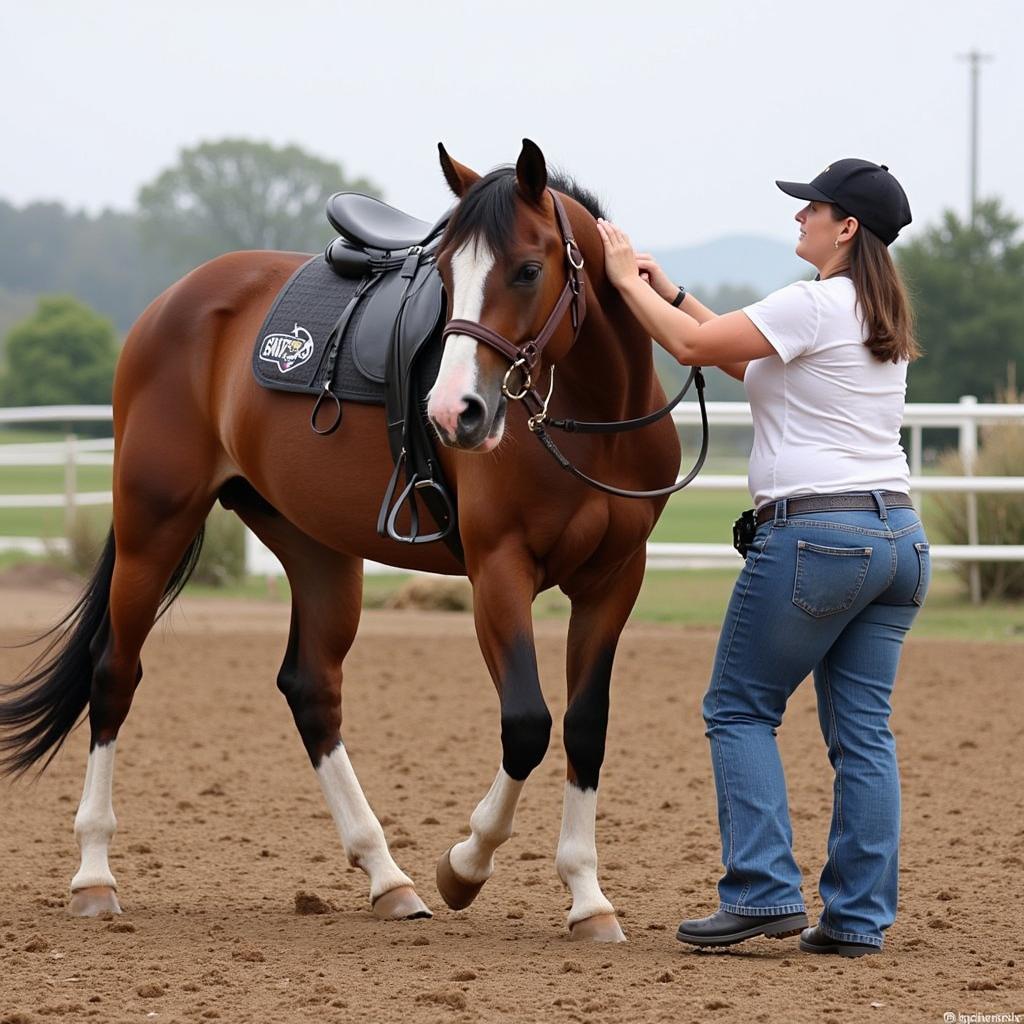Long Reins For Horses are an invaluable tool for training and developing a deeper connection with your equine partner. Whether you’re a seasoned equestrian or just beginning your journey, understanding the nuances of long reining can significantly enhance your horse’s responsiveness, balance, and overall well-being. This comprehensive guide will delve into the intricacies of long reining, exploring its benefits, techniques, and common challenges.
Understanding the Benefits of Long Reins
Long reining, essentially driving your horse from the ground, offers a unique perspective on your horse’s movement and posture. It allows you to influence your horse’s horse in reins gait, balance, and bend without the added weight and influence of a rider. This ground-based training method is particularly beneficial for young horses, helping them develop proper muscle tone and coordination before they’re ridden. Additionally, long reining can be a valuable rehabilitation tool for horses recovering from injuries, allowing them to rebuild strength and flexibility in a controlled environment. It’s also an excellent way to refine communication and build trust between horse and handler.
Working with long reins provides a valuable opportunity to observe your horse’s natural movement patterns. You can identify any asymmetries or weaknesses and address them through targeted exercises. This method encourages the horse to engage their hindquarters, promoting self-carriage and improving overall athleticism.
 Horse Being Long Reined
Horse Being Long Reined
Getting Started with Long Reins for Horses
Before you begin long reining, ensure you have the appropriate equipment. This includes a well-fitted bridle, preferably with a cavesson or a lunging cavesson, and a set of long reins specifically designed for this purpose. The reins should be of adequate length and comfortable to hold. Familiarize yourself with how to long line a horse before moving on to long reins. Starting in a safe, enclosed area is crucial, free from distractions and obstacles.
Begin by introducing your horse to the feel of the long reins, allowing them to become accustomed to the pressure and cues. Start with simple exercises, such as walking and halting, gradually progressing to more complex maneuvers like turns and circles. Consistency and patience are key to success in long reining.
Advanced Long Reining Techniques
As your horse becomes more proficient, you can introduce more advanced techniques, such as lateral work, transitions between gaits, and even work over ground poles or small jumps. These exercises further refine the horse’s responsiveness, balance, and coordination. Long reining can even be used to introduce the horse to driving, preparing them for future work in harness.
Remember, clear communication is essential for effective long reining. Use consistent cues and reward your horse for positive responses. Avoid harsh corrections, as these can create confusion and resistance.
Common Challenges and Troubleshooting
One common challenge in long reining is maintaining consistent contact and communication with the horse. Ensure the reins are adjusted correctly and that you’re maintaining a balanced and upright posture. If your horse becomes resistant or confused, return to simpler exercises and reinforce the basics.
Sometimes, horses may try to kick out or become agitated during long reining. This can often be addressed by ensuring the horse understands the cues and by working in a calm, patient manner. Consider using a pelham bit for horses if necessary, but consult with a professional first.
“Consistent practice and patience are the cornerstones of successful long reining,” advises renowned equine trainer, Sarah Miller. “Focus on building a strong foundation and progressing gradually to avoid overwhelming your horse.”
 Handler Correcting a Horse's Posture During Long Reining
Handler Correcting a Horse's Posture During Long Reining
Conclusion
Long reins for horses offer a powerful and versatile training method that can significantly benefit horses of all ages and disciplines. By understanding the principles of long reining and applying them consistently, you can enhance your horse’s responsiveness, balance, and overall well-being, while strengthening the bond between you and your equine partner. Remember to prioritize clear communication, patience, and positive reinforcement throughout the process.
If you need assistance, don’t hesitate to contact us at Phone: 0772127271, Email: [email protected] Or visit our address: QGM2+WX2, Vị Trung, Vị Thuỷ, Hậu Giang, Việt Nam. We have a 24/7 customer support team.